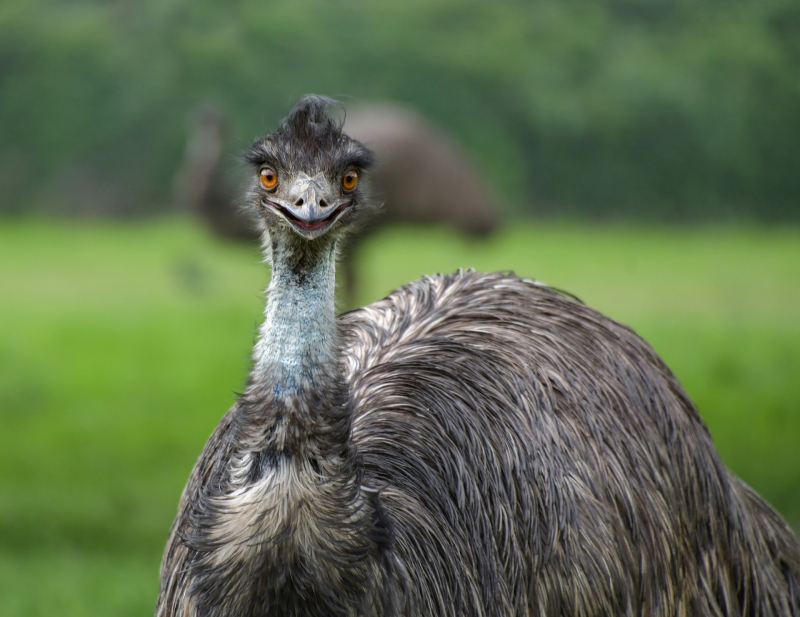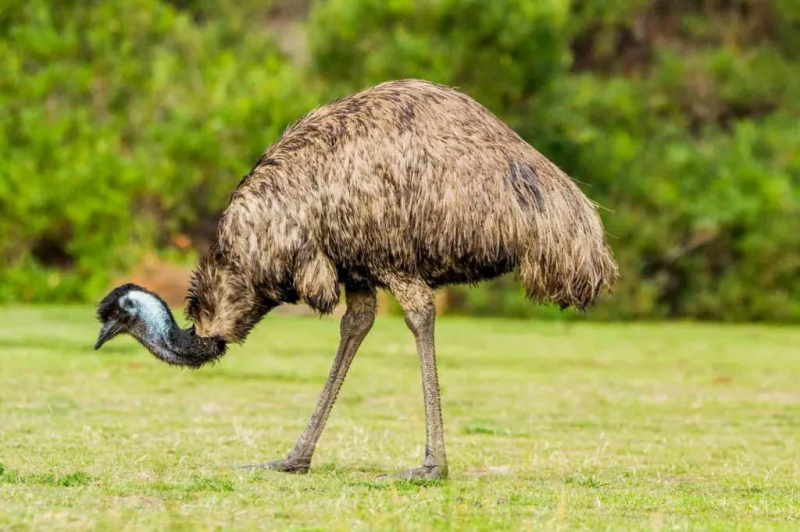Emu (Dromaius novaehollandiae)
The Emu is the second-largest member of the ratites and extant species of bird in the world. They weigh between 40 and 132 pounds and are between 59 and 75 inches tall. Native to Australia, they can also be spotted running around the grasslands of New Guinea, Indonesia, Solomon Islands, and the Philippines. Their preference for grasslands, savannas, and forests comes from their need for water sources since they drink nearly two and a half gallons of water per day. There, these omnivores also forage for fruits, seeds, and small vertebrates. They have strong, long legs that allow them to run at speeds of up to 30 mph. Depending on their surroundings, their plumage might vary, but in general, it is brownish-beige with streaks of black and red.
Unlike most birds, only the males are in charge of building the nest and caring for the eggs. Also, female emus frequently behave more aggressively than male emus and may engage in physical conflict over prospective mates. Despite being considered a species of Least Concern, they are nevertheless in danger from habitat loss, car accidents, and invasive predators.












